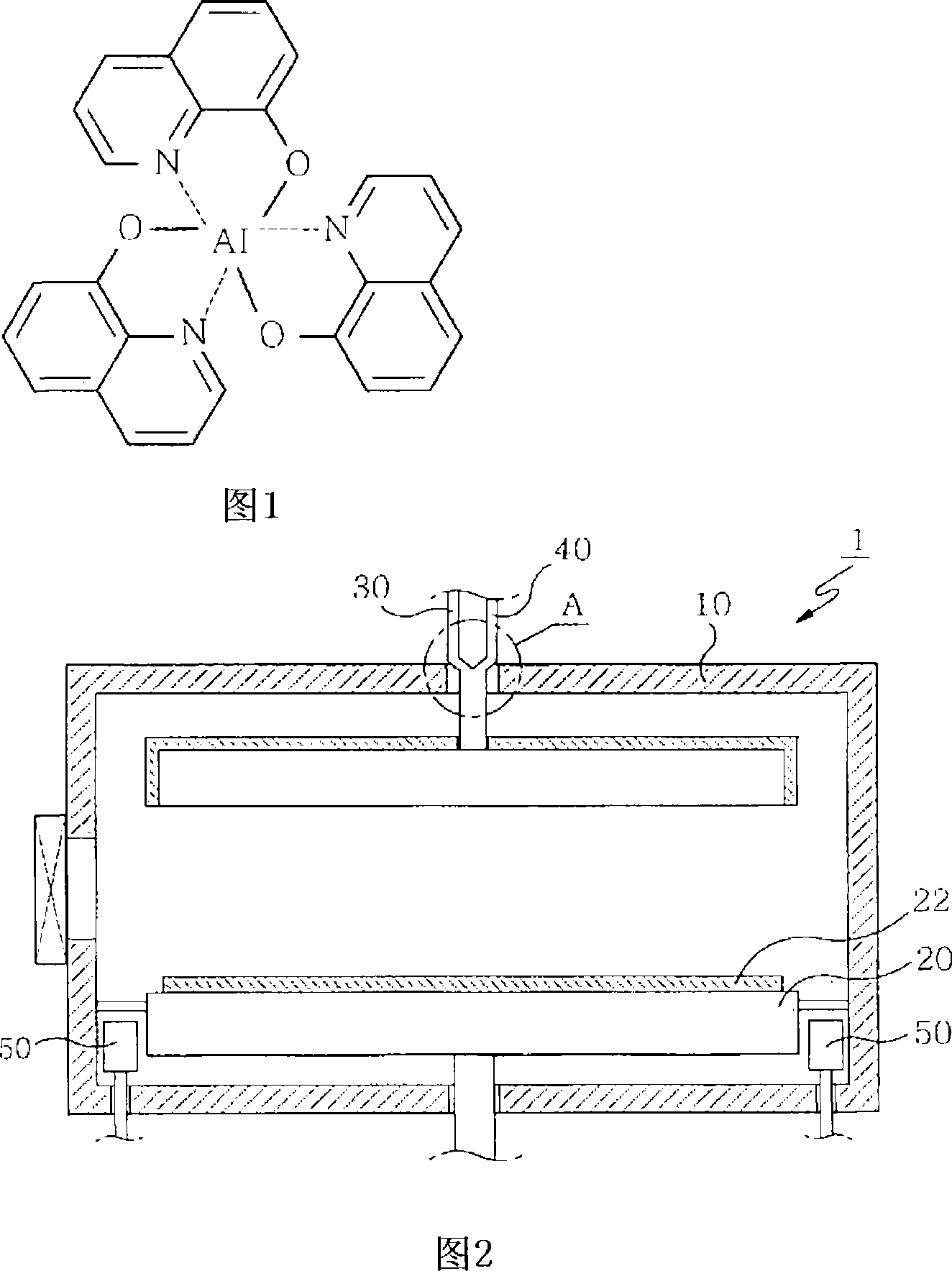Method for forming organic light-emitting layer
A technology for deposition of light-emitting layers and molecular layers, applied in coatings, metal material coating processes, gaseous chemical plating, etc., and can solve problems such as uneven layers, non-commercial scale, and production.
- Summary
- Abstract
- Description
- Claims
- Application Information
AI Technical Summary
Problems solved by technology
Method used
Image
Examples
Embodiment 1
[0042] In this embodiment, a method of forming a light emitting layer using chemical deposition is described.
[0043] A substrate 22 (ITO-coated glass, film or wafer) is mounted on a heated susceptor 20 arranged in the reaction chamber 10 . Thereafter, the temperature inside the reaction chamber 10 is maintained at a temperature suitable for the reaction. The reaction temperature range is preferably from room temperature to 500°C. As used herein, the term "room temperature" is defined as an ambient temperature of about 15°C to about 25°C.
[0044] After the internal reaction temperature of the reaction chamber 10 is stabilized, the metal-containing material and the 8-hydroxyquinoline derivative are fed into the reaction chamber 10 . The metal-containing material is selected from aluminum-, gallium-, and zinc-containing materials. The aluminum-containing material was selected from the 16 compounds shown in Figure 3 and the compounds listed in Table 1 below. The aluminum-co...
Embodiment 2
[0076] This example describes the formation of Alq by molecular layer deposition 3 layer method.
[0077] The substrate 22 is mounted on the susceptor 20 arranged in the reaction chamber 10 . Thereafter, the internal temperature of the reaction chamber 10 is maintained at a temperature suitable for the reaction. The reaction temperature ranges preferably from room temperature to 500°C. As used herein, the term "room temperature" is defined as an ambient temperature of about 15°C to about 25°C.
[0078] After the internal reaction temperature of the reaction chamber 10 is stabilized, the aluminum-containing material is fed into the reaction chamber 10 . The aluminum-containing material was selected from 16 compounds with structures shown in FIG. 3 and some compounds listed in Table 1. The aluminum-containing material is vaporized before being fed into the reaction chamber 10 . Due to the good vaporization characteristics of aluminum-containing materials, they can be easily...
PUM
 Login to view more
Login to view more Abstract
Description
Claims
Application Information
 Login to view more
Login to view more - R&D Engineer
- R&D Manager
- IP Professional
- Industry Leading Data Capabilities
- Powerful AI technology
- Patent DNA Extraction
Browse by: Latest US Patents, China's latest patents, Technical Efficacy Thesaurus, Application Domain, Technology Topic.
© 2024 PatSnap. All rights reserved.Legal|Privacy policy|Modern Slavery Act Transparency Statement|Sitemap



